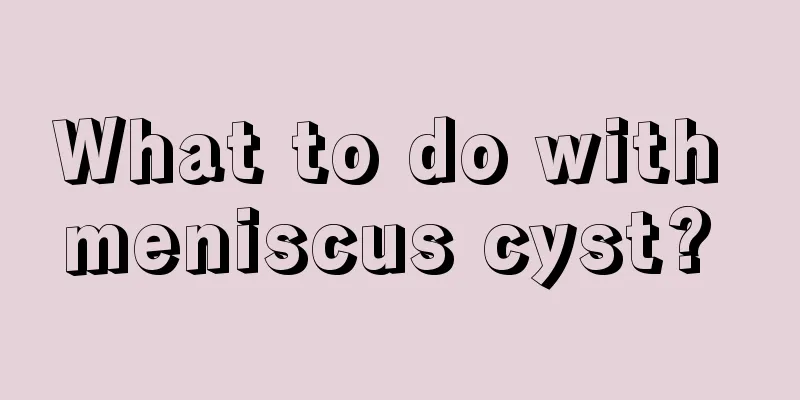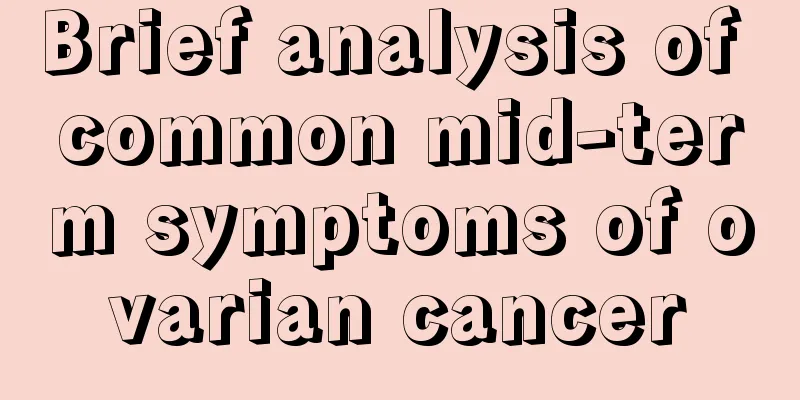What to do with meniscus cyst?

|
Meniscus disease is a very common disease. Most meniscus diseases are caused by trauma, but sometimes meniscus injury is not caused by disease. It may also be that a cyst has grown on the meniscus. If you want to treat meniscus cyst, it is best to go to the hospital for a check-up in time to see the size of the cyst. If the cyst is very large, it needs to be treated surgically. Only when the cyst is removed can the disease be cured. Under what circumstances is meniscus cyst likely to occur? 1. Trauma: can cause contusion and blood accumulation within the meniscus tissue, leading to myxoid degeneration. Meniscus injury caused by trauma is the main cause of meniscus cysts. 2. Degeneration with age: can cause local necrosis and mucinous degeneration into cysts. 3. The synovial cell inclusions or metaplastic cells secreting mucus in the meniscus tissue lead to cyst formation. 4. Synovial cells are translocated into the meniscus through micro-tears of the fibrocartilage, resulting in the secretion of acidic mucopolysaccharide proteins, which form the contents of the meniscus cyst. First, a smaller cyst appears in the avascular area. Later, due to the pumping effect of synovial fluid suction during joint movement, the small cyst migrates to the surrounding area of the knee joint. More fluid enters the cyst, causing its volume to continue to increase. What are the most common groups and locations for meniscus cysts? The age of onset of meniscus cysts is mainly young people, and it is more common in athletes. A large number of literature reports that meniscus cysts are more likely to occur in the lateral meniscus, and the ratio of medial to lateral meniscus cysts ranges from 1:3 to 1:10. Medial meniscus cysts are more likely to occur in the posterior horn of the meniscus, while lateral meniscus cysts are more likely to be located in the anterior horn and body of the meniscus. The main reasons for the high incidence of cysts in the lateral meniscus are: (1) The lateral meniscus bears a greater load than the medial meniscus: In 1974, Seedhom et al. estimated that the medial meniscus accounts for about 57% of the total load of the knee joint, while the lateral meniscus accounts for 69%. The lateral meniscus is more susceptible to injury. (2) Anatomical characteristics of the meniscus: The outer 1/3 of the meniscus is supplied by blood vessels, while the inner 2/3 has no blood supply. Its nutrition comes from the diffusion of synovial fluid and is prone to degenerative changes. The lateral meniscus is "O"-shaped, wider and thicker than the medial meniscus. The huge central part is a nutrient-deficient area that is prone to myxoid degeneration. What types of meniscus cysts can be divided into? According to the location of meniscus cyst, meniscus cyst can be divided into the following three types: parameniscus type, intrameniscus type and synovial cyst type. What are the common symptoms of meniscus cyst? Chronic joint pain, pain after fatigue or long walking, pain when squatting, pain when going up and down stairs, which will be relieved or even disappear when resting, and may be accompanied by night pain. Some patients also have other symptoms. Some patients may experience typical symptoms of meniscus tear, such as locking of the joint, weak legs and snapping. What tests can be done for meniscus cyst? Meniscus cyst can first be examined by a professional doctor. Some patients can see an obvious lump in the joint space, which usually increases when the knee is extended and becomes smaller or even disappears when the knee is flexed. A swelling is palpable in the joint space, which is hard, tough, and cystic and may be accompanied by tenderness; signs of meniscus injury may also often be present. Currently, the main imaging methods for diagnosing meniscus cysts include arthrography, ultrasound, CT and MRI techniques. Among them, ultrasound is difficult to show the relationship between the cyst and the intra-articular structure, CT is difficult to show tiny meniscus tears, and arthrography is difficult to show non-communicating cysts that are not connected to the joint. MRI technology, as a non-invasive diagnostic method, has a high soft tissue resolution and can not only determine the nature of the lesion, but also clearly show the relationship between the lesion and the joint and intra-articular structure. It has important guiding significance for the selection of clinical treatment plans for meniscus cysts. Meniscus cysts show isointense or low signal on T1W and high signal on T2W, manifesting as round or oval cystic changes between the outer edge of the meniscus and the joint capsule or in the meniscus, with clear boundaries and connected to the meniscus rupture. |
<<: How much sleep does a 2 and a half month old baby need?
>>: Four and a half month old baby has unstable head holding?
Recommend
What eyebrow shapes are suitable for round faces
In daily life and at work, many women like to put...
What is the reason why new teeth do not fall out during the tooth replacement period? How to deal with it?
The tooth replacement period is a very important ...
Do you know how to peel water chestnuts?
There is a kind of fruit of an aquatic herb, the ...
What is the reason for the pain in the left upper arm
Sometimes, if we use our left upper arm frequentl...
Early symptoms of throat cancer in women
The early symptoms of throat cancer in women are ...
How to detect atherosclerosis?
Atherosclerosis is not unfamiliar to many people....
Why do I sweat as soon as I wake up?
Sleep is very important for people. Some people h...
How is the interventional treatment plan for liver cancer formulated? Uncovering the interventional treatment plan for liver cancer
Hepatocellular carcinoma is one of the common mal...
Is it contagious to take care of a colon cancer patient?
Is it contagious to take care of a colon cancer p...
What are the tips for teratoma care
What are the tips for teratoma care? Teratoma is ...
The difference between black dates and red dates lies here!
Both black dates and red dates have extremely hig...
3 lifestyles to prevent lung cancer for life
At present, the causes of lung cancer are basical...
What kind of exercises do you need to do if you have nasopharyngeal cancer
With the deteriorating environment, various unple...
CLS biological immunotherapy opens a new era in the treatment of uterine tumors
Eliminating uterine tumors without removing the u...
How to remove scalp
Scalp dandruff may happen to everyone. It is rela...









